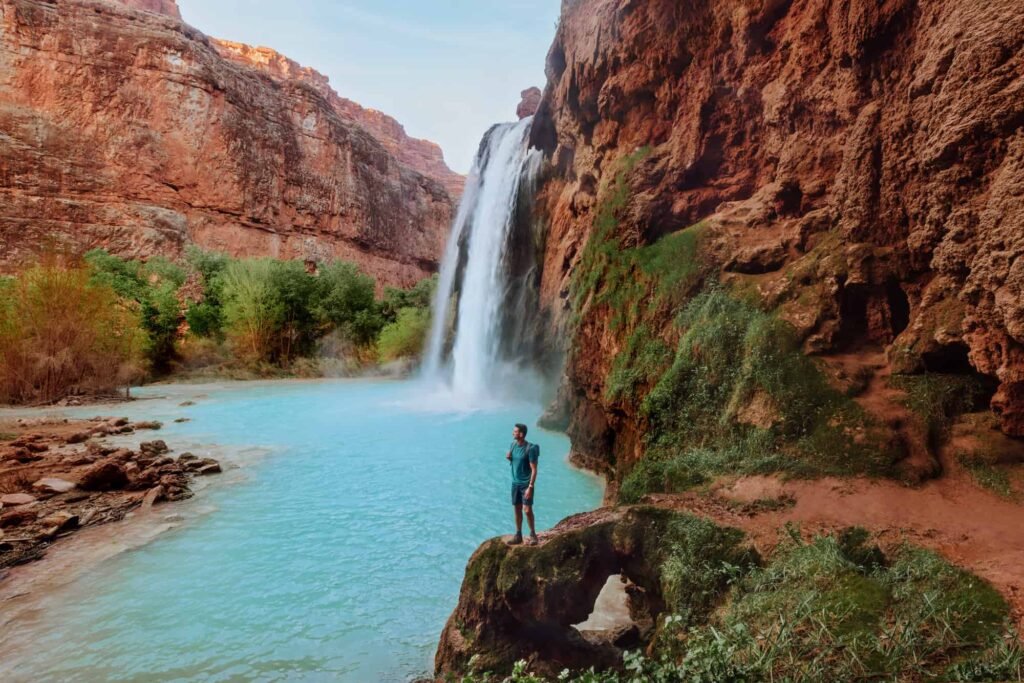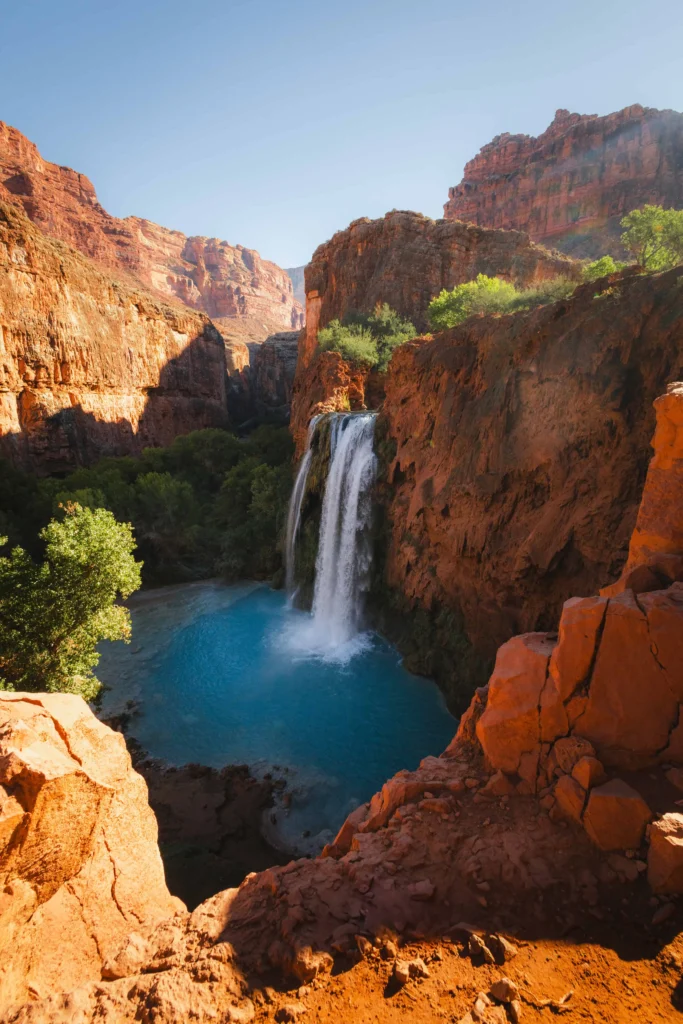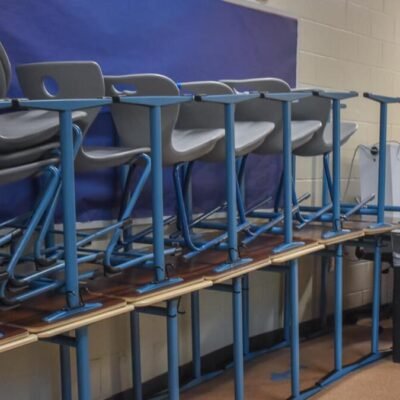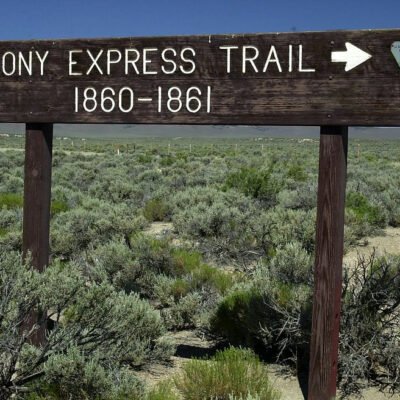Havasu Falls, located deep within the Havasupai Indian Reservation in Arizona, is one of the most beautiful waterfalls in the United States. With its bright turquoise water flowing over red canyon walls into clear pools, it feels like a hidden paradise.
But visiting Havasu Falls isn’t as easy as just showing up. You need to plan ahead, hike long distances, and most importantly, get a Havasu Falls permit. This guide will help you understand how to get a permit, what to expect on the hike, and how to make the most of your trip.
What is Havasu Falls
Havasu Falls is a stunning 100-foot waterfall located in the Grand Canyon area. It is part of the Havasupai Tribe’s land and is one of five waterfalls in the area. The other waterfalls include Mooney Falls, Beaver Falls, Navajo Falls, and Fiftyfoot Falls.
The water is naturally bright blue-green because of its high mineral content. Surrounded by orange cliffs and green trees, Havasu Falls is a perfect place for nature lovers and photographers.
Why You Need a Permit
Havasu Falls is on land owned and protected by the Havasupai Tribe. To help protect their land and limit the number of visitors, the tribe requires every person to have a Havasu Falls permit.
You cannot enter the area, hike to the falls, or camp there without a permit. Tribal rangers check for permits, and anyone without one may be fined or asked to leave.
Permits help reduce crowding, protect the land, and make sure that the natural beauty of the falls is preserved for future generations.
How to Get a Havasu Falls Permit

Permits are released once a year on February 1st for the full season, which runs from February through November. They often sell out within minutes.
You must get your permit through the official website of the Havasupai Tribe:
https://www.havasupaireservations.com
Permit prices vary slightly each year, but typically cost around $395 to $455 per person for a 3-night camping trip. This includes entry fees, camping fees, and taxes.
Only overnight permits are allowed — no day hiking is permitted.
Tips to get a permit:
- Create your account on the website before February 1
- Be online early and ready to book as soon as permits open
- Have several date options available in case your first choice is sold out
- Be patient and act quickly
Reservation Rules and Guidelines
By getting a Havasu Falls permit, you agree to follow the rules of the Havasupai Reservation. These rules help protect the land, water, and local community.
Here are some important rules to follow:
- No alcohol or illegal drugs allowed
- No drones or flying devices
- Stay on marked trails
- No campfires allowed
- Respect local wildlife and tribal customs
- Pack out all your trash
Breaking these rules can result in fines, being asked to leave, or being banned from future visits.
Getting to the Trailhead
The hike to Havasu Falls starts at the Hualapai Hilltop, a remote trailhead in Arizona. It’s about a 4–5 hour drive from either Flagstaff, Arizona or Las Vegas, Nevada.
There is a large parking lot at the hilltop where visitors leave their cars during their hike. Be aware that there are no gas stations, stores, or water available at the trailhead. Make sure to fill up your gas tank and stock up on food and supplies before arriving.
Directions to Hualapai Hilltop:
- From Flagstaff: Take I-40 West to Route 66, then through Seligman and Indian Road 18
- From Las Vegas: Drive to Kingman, then Route 66 through Peach Springs, and finally Indian Road 18
The Hike to Havasu Falls
The hike to Havasu Falls is 10 miles one way, making it a 20-mile round trip. It begins with a steep 1-mile descent into the canyon, followed by a long, mostly flat walk through beautiful red rock scenery.
After about 8 miles, you will reach the Supai Village, where you must check in with your permit. From there, it’s another 2 miles to the campground and falls.
Here’s a quick overview:
- Distance: 10 miles (one way)
- Time: 4 to 6 hours each way
- Difficulty: Moderate to hard
- Trail type: Dirt and rock, exposed to sun
Start your hike early in the morning to avoid the intense midday heat, especially during summer months.
Camping and Accommodation
Most visitors camp near the falls. Camping is included in your permit. The campground stretches for about a mile between Havasu Falls and Mooney Falls. You can choose any open site, first-come, first-served.
Campground amenities include:
- Picnic tables
- Composting toilets
- Access to natural spring water (must be filtered or treated)
If camping isn’t your style, there is also Havasupai Lodge in the Supai Village. It’s more expensive and has very limited availability. Lodge reservations must be made separately and are often booked out quickly.
What to Pack
Packing smart is key to a comfortable trip. Here are the basics:
Essentials:
- Havasu Falls permit and ID
- Plenty of water (3-4 liters per person for the hike)
- Snacks and food for 3+ days
- Tent, sleeping bag, and sleeping pad
- Small stove or cooking equipment
- Water filtration or purification system
Clothing:
- Breathable hiking clothes
- Lightweight rain jacket
- Swimsuit and towel
- Hat, sunglasses, and sunscreen
- Hiking boots and water sandals
Other items:
- First-aid kit
- Flashlight or headlamp
- Trash bags
- Portable phone charger or power bank
- Trekking poles (optional but helpful)
Best Time to Visit

The best months to visit Havasu Falls are March to May and September to October. During these times, the weather is warm enough for swimming but not too hot for hiking.
Summer (June–August) is very hot, often over 100°F. Monsoon storms during this time can also cause flash floods, which are dangerous and can close the trails.
Winter months (December through February) are off-season, and the area is usually closed to visitors.
Safety Tips
Your trip will be more enjoyable and safe if you keep these tips in mind:
- Stay hydrated and drink water often
- Watch for signs of heat exhaustion
- Avoid hiking during peak heat hours
- Do not jump into unknown water depths
- Watch your step near waterfalls and cliffs
- Let someone know your travel plans
- There is no cell service; bring a GPS device or emergency beacon if possible
Leave No Trace
Havasu Falls is sacred land. Visitors must protect it by following the Leave No Trace principles:
- Pack out everything you bring in
- Do not touch or climb on ancient structures or carvings
- Do not leave food out for animals
- Use composting toilets properly
- Avoid using soaps or chemicals in the water
Taking care of the land ensures it remains beautiful and open to future visitors.
Final Thoughts
Havasu Falls is more than just a beautiful destination — it’s a rare and unforgettable adventure. But getting there takes planning, effort, and respect. A Havasu Falls permit is your key to this magical place, and following the tribe’s rules helps keep the experience special for everyone.
From the sound of rushing water to the cool swim in the pools, your time at Havasu Falls will stay with you for a lifetime. So mark your calendar, get your gear ready, and prepare for one of the most scenic hikes in the world.
Do Follow USA Glory On Instagram
Read Next – Explore Letchworth State Park: New York’s Grand Canyon






